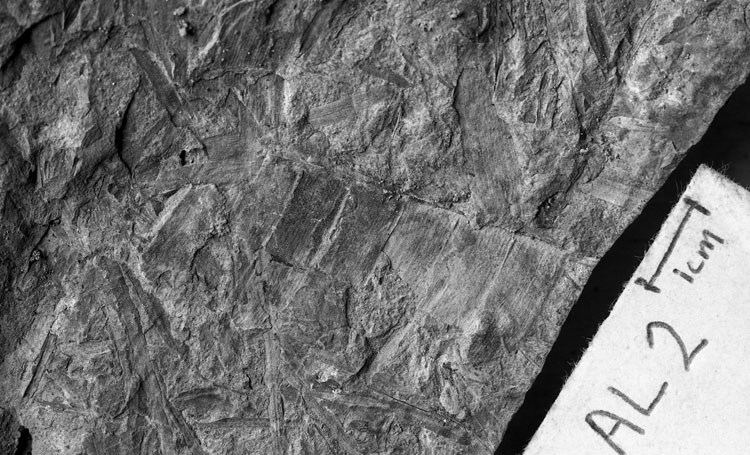Locality
Grebenka, Yelisseev Locality, Site AL 2
Description
This description of Nilssonia alaskana Hollick is from Hollick (1930) (p. 45)
"Plate 6, Figures 3-6a, 7, 8a, 9, 10; Plate 7, Figures 1, 2a, 3a, 5, 7-9a"
"Fronds varying in size, linear oblong or linear obovate, deeply pinnatifid; segments blunt tipped and slightly expanded at the bases, lower ones mostly subtriangular and short, upper ones mostly linear oblong or ligulate, the terminal ones broadest, forming a truncate or broadly emarginate apex; nervation simple, uniform, parallel."
Remarks
Remarks on Nilssonia alaskana Hollick from Hollick (1930) (p. 45)
"A considerable diversity of forms are included in this species, and possibly more than one species may be represented; but the probabilities appear to be that the specimens merely represent fragments of different parts of the fronds, or fronds from different parts of the plants, or of different stages of growth and age. Typical basal parts are shown in Figures 4 and 10 on Plate 6, and typical apical parts in Figures 3a and 9a on Plate 7.
Certain of the specimens, such as the one represented by Figure 3 on Plate 6, bear a striking resemblance to Nilssonia californica (Fontaine) Fontaine (1905) (p. 252, pl. 67, fig. 7 [= Pterophyllum californicum Fontaine, in Diller, J. S., and Stanton, T. W., Geol. Soc. America Bull., vol. 5, p, 450, 1894]) from the Shasta series of California; and possibly as large a collection of material from that horizon as we have from Alaska might prove them all to belong to one and the same species. Under existing circumstances, however, it seems advisable merely to note the resemblance.
More or less of a superficial resemblance may also be noted to Pterrophyllum concinnum Heer (1874) (p. 68, pl. 14, figs. 15 - 20; pl. 15, figs. 11, 5b) and Pterophyllum lepidum Heer (1874) (pl. 16, figs. 1, 2, 3b) from the Kome beds of Greenland; but the nervation of our specimens, wherever it can be discerned, is clearly that of Nilssonia, and the foliar segments subtend more acute angles with the rachis than those of either of the species of Pterophyllum mentioned."
This photograph was made in the field. The specimen is in the collection of the Geological Institute, Russian Academy of Sciences, Moscow, Russia. For further details of the context of the collection see Spicer et al. (2002).
